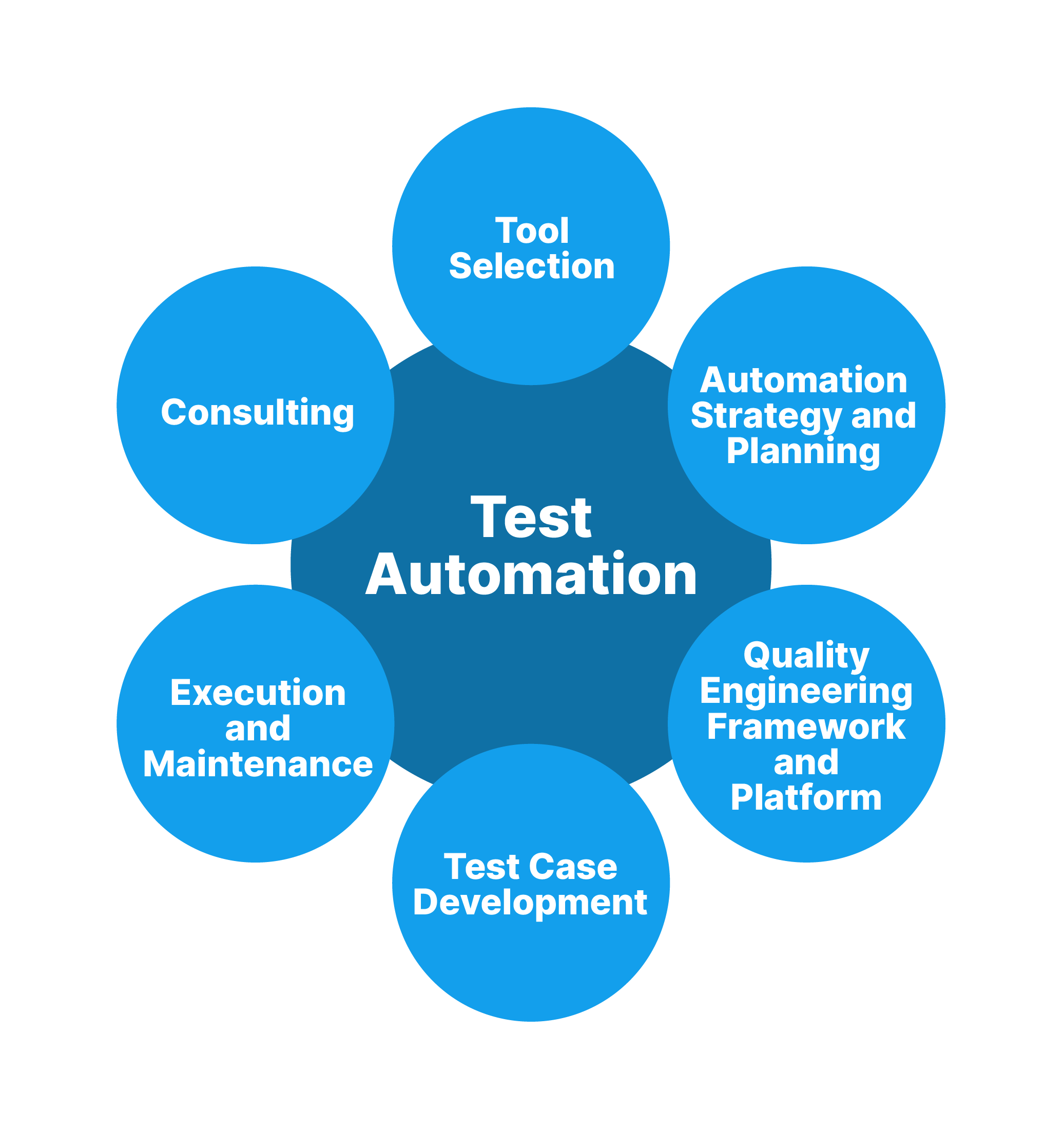The Ultimate Overview to Implementing Automation Testing Efficiently
The Ultimate Overview to Implementing Automation Testing Efficiently
Blog Article
From Guidebook to Automated Screening: A Comprehensive Guide to Transitioning Smoothly and Efficiently
In the world of software application testing, the shift from guidebook to automated processes has actually ended up being an increasingly crucial transition for organizations looking for to improve performance and accuracy in their testing techniques. As innovation proceeds to advance, the need for effective and seamless computerized testing techniques has actually never ever been a lot more important. The trip from guidebook to automated screening is not without its obstacles, yet when approached purposefully and with a clear strategy in mind, the advantages can be substantial - automation testing. In this thorough overview, we will certainly check out crucial steps and factors to consider important for a successful change, from the initial option of tools to the combination of automation right into existing workflows. Stay tuned to discover the understandings that will aid lead the way for a smoother and a lot more effective testing procedure.
Benefits of Automated Checking
Automated screening uses numerous advantages, enhancing performance and accuracy in software application advancement procedures. One main benefit is the considerable decrease in screening time. Automated examinations can be run all at once on several tools and operating systems, significantly accelerating the screening phase compared to manual testing. This raised efficiency permits faster feedback on the top quality of the software application, allowing designers to determine and resolve problems without delay.
In addition, automated screening ensures a greater level of precision in spotting problems. Considering that automated tests follow predefined scripts, human error is minimized, leading to even more reliable test outcomes. Uniformity in testing is also boosted, as automated examinations perform the very same steps specifically each time they are run. This uniformity is essential in making sure that all performances of the software are completely examined, decreasing the chance of unseen bugs sliding with to production.
Choosing the Right Devices

To start with, assess your goals and demands. Understand the scope of your job, the modern technologies included, and the ability of your group. This evaluation will certainly assist you figure out the capabilities and features you call for in your testing devices.
Secondly, consider the compatibility of the devices with your existing procedures and systems. Seamless integration with your existing software program advancement lifecycle is crucial to make certain a smooth shift to automation.
Furthermore, examine the scalability and versatility of the tools. As your screening needs evolve, the tools need to have the ability to adjust and fit modifications properly.
Last but not least, consider the assistance and neighborhood around the tools. When implementing automated screening, robust support and an active user community can offer important resources and support. By meticulously thinking about these facets, you can select the right tools that align with your requirements and set the stage for a successful shift to automated screening.
Composing Effective Examination Manuscripts

When crafting examination scripts, it is important to take into consideration the certain requirements of the software program being checked and ensure that the manuscripts deal with all essential performances. Detailed and clear naming conventions for examination scripts and examination situations can boost readability and maintainability. Furthermore, incorporating mistake handling mechanisms within the examination scripts can help in determining and addressing problems quickly.
In addition, organizing examination scripts right into modular parts can enhance reusability and scalability, reducing redundancy and boosting effectiveness in examination script upkeep. Regular evaluations and updates to examine scripts are essential to keep rate with evolving software visit this page program requirements and performances. By following these concepts, testers can create reliable and robust examination manuscripts that contribute dramatically to the success of automated testing processes.
Integrating Automation Into Workflows
Effective assimilation of automation devices into existing process improves and simplifies processes performance within software program advancement cycles. When integrating automation right into workflows, it is crucial to determine recurring jobs that can be automated to conserve time and decrease human mistake. By flawlessly integrating automated testing tools like Selenium or Appium into the software development lifecycle, teams can attain faster responses on code changes, resulting in quicker insect discovery and resolution. This combination enables continuous screening throughout the development process, guaranteeing that any type of problems are determined beforehand, causing greater software application quality. Additionally, automation can be utilized to cause examinations immediately after each code commit, giving prompt recognition and freeing up testers to concentrate on even more complicated scenarios. Correct assimilation of automation tools requires view it now collaboration in between advancement, testing, and procedures groups to establish a unified operations that maximizes effectiveness and efficiency in delivering premium software.
Making Sure a Smooth Transition
Effectively transitioning to automated testing entails precise preparation and mindful implementation to take full advantage of and decrease disruptions efficiency in the software program advancement procedure - automation testing. To make sure a smooth change, it is necessary to begin by conducting a thorough evaluation of the existing screening procedures and recognizing locations where automation can bring one of the most substantial advantages. Involving with all stakeholders beforehand at the same time, consisting of programmers, testers, and task supervisors, is essential for gathering support and buy-in for the automation effort
Communication is crucial throughout this shift stage. Clear interaction of the objectives, advantages, and assumptions of automated testing aids to take care of any type of resistance or problems that may develop. In addition, supplying adequate training and resources for staff member to upskill in automation tools and methods is essential for ensuring an effective change.

Verdict
In final thought, transitioning from handbook to automated screening offers many advantages, including raised effectiveness and integrity. By selecting the suitable devices, writing reliable examination manuscripts, and incorporating automation perfectly right into workflows, organizations can make certain a effective and smooth transition. It is important to accept automation as an important possession in software application testing procedures to improve total top quality and efficiency.
In the realm of software application testing, the shift from guidebook to automated processes has become a progressively vital shift for organizations looking for to enhance effectiveness and precision in their screening practices. Automated tests can be run concurrently on numerous devices and operating systems, substantially speeding up the screening stage contrasted to hand-operated testing. Uniformity in screening is likewise enhanced, as automated tests perform the exact same steps exactly each time they are run.To make certain the successful execution of picked screening devices, the production of reliable examination scripts plays an important function in verifying the performance and efficiency of automated procedures - automation testing. By following these concepts, testers can produce efficient and robust examination scripts that add considerably to the success of automated testing procedures
Report this page